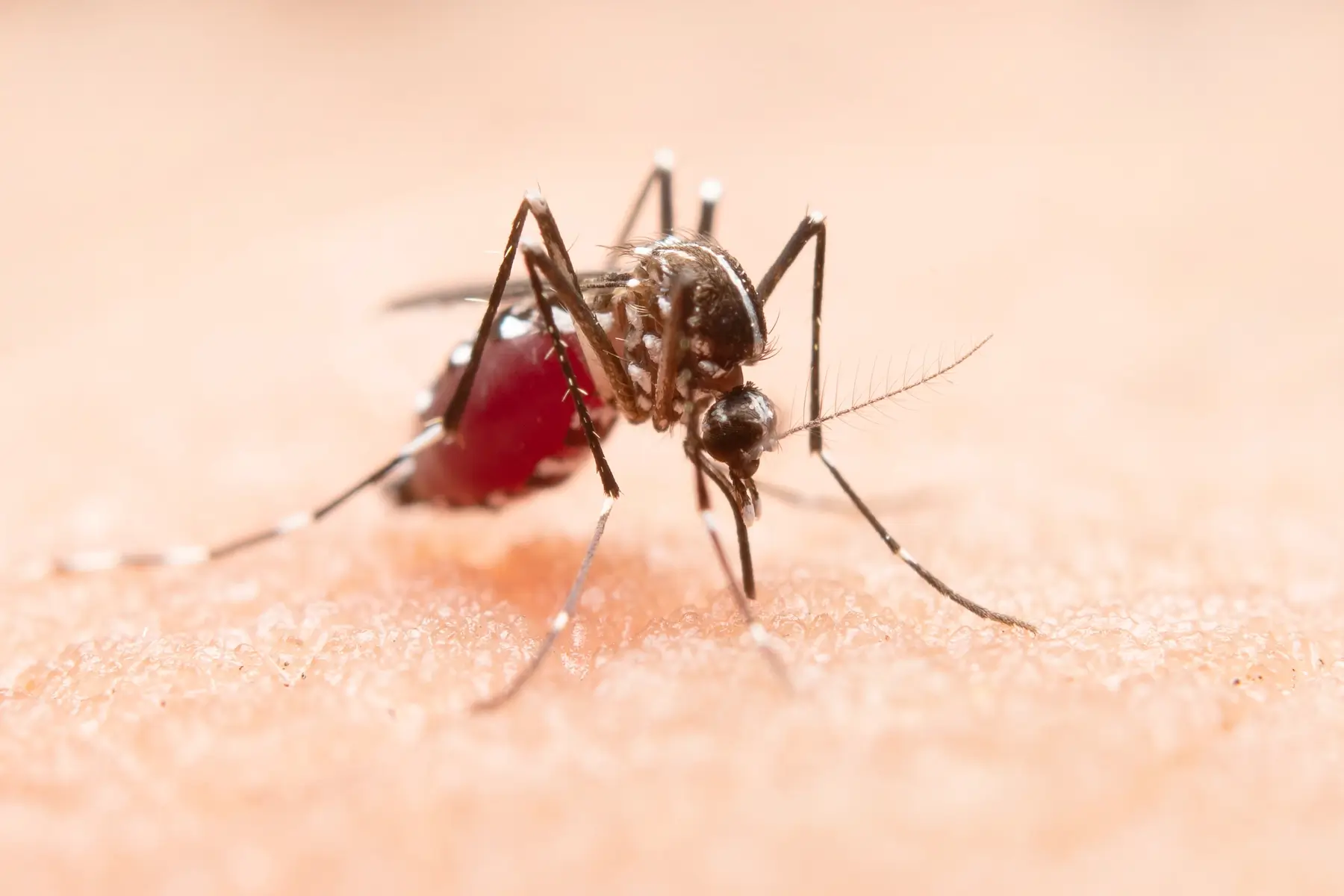Malaria is a parasitic infectious disease, with fever and chills being among the prominent symptoms of this illness.
Other symptoms of this disease include:
- Anemia
- Blood in urine
- Excessive sweating
- Headache
- Nausea and muscle fatigue
- Vomiting and stomach upset
- Shortness of breath and jaundice in severe cases of the disease
Generally, the first symptoms appear 2 to 4 weeks after infection, although in some cases they may appear from the 8th day onward, and in rare cases, symptoms may manifest after a year.
The cause of disease transmission is external and occurs through an external parasite that infects the body, with the Anopheles mosquito being the most prominent parasite for causing infection in humans. However, the condition is that this mosquito must itself be a carrier of the disease; otherwise, the bite of a normal mosquito will never cause disease transmission.
How does infection occur?
Through the mosquito bite, the parasite enters the bloodstream and from there infiltrates the red blood cells, beginning to destroy them. This process takes two to three days, and due to this, their numbers continue to increase significantly. After the blood, they immediately attempt to reach the liver, and upon reaching the liver, they produce another parasite called merozoites.
Regarding the causes of malaria transmission, apart from the Anopheles mosquito, the disease can be transmitted through other means, such as:
- Through childbirth (from mother to infant)
- Through blood transfusion from an infected person to a healthy person
- Through sharing needles between infected and healthy individuals (this route is more common among drug users who share needles)
It is worth noting that this disease is related to warm climate and therefore poses a serious threat in tropical and subtropical countries, becoming a health problem for the entire world. According to statistics, in 2020 alone, more than 240,000,000 (two hundred and forty million) cases of infection and approximately 627,000 (six hundred and twenty-seven thousand) deaths were recorded.
To diagnose this disease, several tests are performed:
Rapid diagnostic testing, which is a common test that quickly determines the positive or negative status of the disease. There is another type of test that is not used for humans but rather for the mosquitoes themselves, by taking a blood sample from the mosquito, with test results available within 6 to 12 hours.
Since this disease is a type of parasitic infection, it brings about other health problems such as:
Anemia – kidney problems – liver problems – respiratory problems – low blood count – spleen problems – brain swelling (in very severe cases)
Treatment of Malaria
Malaria is considered a medical emergency, so patients need to stay in the hospital under medical supervision to receive complete medication doses. The most prominent malaria treatment that was previously used was chloroquine, but this medication has been removed from the list of first-line drugs in recent years due to the development of drug resistance. Therefore, currently the best anti-malarial drugs include: mefloquine, atovaquone-proguanil (also called Malarone), and doxycycline. Supportive respiratory medications are also included in the treatment regimen for malaria patients.
How do we protect ourselves?
Most people living in areas where malaria is prevalent have developed some immunity against the disease and are no longer at significant risk. However, visitors and travelers to these areas should protect themselves by wearing protective clothing and using mosquito repellents.
Wishing you good health and freedom from psychological and physical distress.
Prepared by: Rasti Abdullah Reza
Student at College of Medical Sciences / KUMS

Leave a Reply